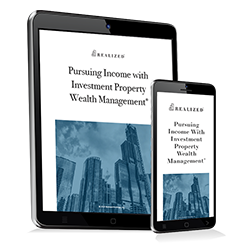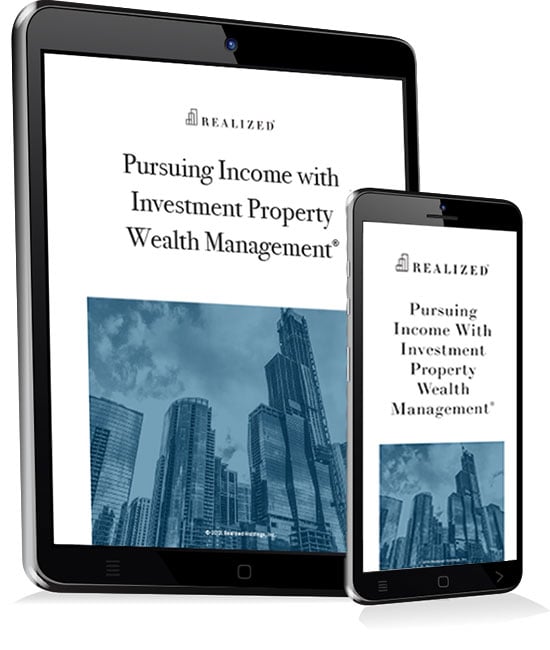
In retirement, your portfolio allocation will depend on your goals. Maybe you want income or perhaps you want growth for your heirs. Both require different portfolio allocations. Those looking for income should consider managing exposure to risky assets. Otherwise, that income can be threatened by swings in the portfolio’s value. While just the opposite may be true for investors with a growth objective. In this article, we’ll look at what to consider when deciding on a portfolio allocation strategy for retirement.
Finding A Suitable Asset Allocation
Your younger years are for building wealth through appreciating assets that seek to provide liquidity and cash flow during retirement. As you approach retirement, your objectives may change in an effort to be less volatile, which can help protect your portfolio’s value and puts more focus on potential income.
In our opinion, portfolio value should be protected from the stock market’s volatile moves, which means being less invested in stocks and other volatile assets. That doesn’t mean moving everything to cash. The portfolio will still be invested, but in exchange for pursuing capital preservation, potential returns may be reduced.
Managing volatility may mean selling some stock holdings and perhaps buying more bonds. It can also mean selling some real estate investment holdings to raise cash if needed. Basically, any assets that are of a volatile nature are reduced.
Let’s look at a diversified portfolio as it transitions into retirement. Leading up to retirement, the portfolio is composed of:
- Stocks — 70%
- Bonds — 10%
- Direct real estate — 20%
This portfolio is heavily weighted to volatility and could be at risk of a large drawdown, which would have a detrimental effect on the portfolio’s value and its ability to provide potential monthly distributions. To start, the portfolio may shift more into income-generating bonds:
- Stocks — 45%
- Bonds — 35%
- Direct real estate — 20%
The shift into bonds helps manage volatility while seeking to maintain income potential. As the investor ages, more can be allocated from stocks and into more conservative assets. It will all depend on the investor’s personal scenario, such as their age and investment objectives.
Income would be just one of many possible objectives. By working with a tax advisor and financial planner, a solid plan can be created.
Getting The Most Out Of Your Real Estate Investments In Retirement
Just because you’re entering retirement doesn’t mean it's time to liquidate your real estate investments. There’s still plenty more you can get out of them. As mentioned above, some liquidation may be necessary if cash is needed. When entering retirement, new retirees may decide it's time to improve their home, buy an RV, or do a little globetrotting. All of those events require cash.
For real estate that you’re planning to hold, it can become a great wealth builder for your heirs. If you’ve used 1031 exchanges before retirement, you can continue using them during retirement. By continuing to use 1031 exchanges, you’ll defer taxes, and when the time comes for your heirs to inherit your property holdings, they’ll benefit as well.
When heirs inherit property that was acquired in a 1031 exchange, they don’t have to pay taxes on it. Additionally, they’ll receive a step-up in basis. That means the property will be valued at the current market rate, basically wiping out any appreciation from the time that it was acquired.
Diversification is also important in real estate investing. One method for diversifying your real estate holdings is to invest in a Delaware Statutory Trust (DST). DSTs are funds that invest in commercial-grade properties. Investing in a single DST, assuming it is composed of several properties, will help to diversify your real estate holdings without having to purchase multiple properties. DSTs are passive investments, which means you’ll have to give up all control to the DST sponsor. DSTs can also be used in 1031 exchanges.
When entering retirement, capital preservation and income generation can become more important than growth or gains. By shifting away from more risky holdings, you can manage some volatility exposure while retaining income generation potential. Additionally, any real estate that you’ve acquired through a 1031 exchange can be passed on to your heirs tax-free with a step-up in basis.
Neither asset allocation nor diversification guarantees a profit or protects against a loss in a declining market. They are methods used to help manage investment risk.
Hypothetical portfolios are for illustrative purposes only and are not recommendations or advice of any kind. Any investments or strategies referenced herein do not take into account the investment objectives, financial situation, or particular needs of any specific person. Product suitability must be independently determined for each individual investor.



